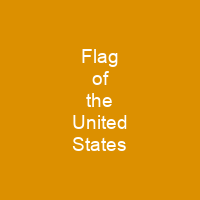The American Flag: A Symbol of Liberty and Unity
Imagine standing in front of the grandeur of the United States Capitol, gazing at the flag that has flown over this nation for centuries. The Stars and Stripes, with its 13 alternating red and white stripes and a blue canton filled with 50 stars, is more than just a piece of fabric—it’s a living testament to American history and values.
The Evolution of the Flag
How did this iconic symbol come into being? The first official flag resembling the ‘Stars and Stripes’ was the Continental Union Flag, used from 1775 to 1777. It featured 13 red-and-white stripes with the British Union Flag in the canton. This flag remained the national flag until June 14, 1777, when the Continental Congress passed the Flag Resolution, describing a new design with thirteen stripes and thirteen stars.
Theories Behind the Design
There are two widely repeated theories about the inspiration behind the flag’s design. One suggests that it was inspired by George Washington’s family coat of arms, but there is no direct evidence to support this claim. Another theory points to the East India Company flag, which may have influenced the design due to its similarity.
The Betsy Ross Myth
While many believe that Betsy Ross sewed the first American flag from a pencil sketch handed to her by George Washington, historians argue that this is an ‘enduring myth’ with no discernible evidence. The earliest known example of the Betsy Ross flag dates back to 1792 in a painting by John Trumbull.
Design Changes Over Time
The current design of the U.S. flag, featuring 50 stars and 13 stripes, is its 27th iteration since 1777. The flag has been modified 26 times to reflect the addition of new states. The 48-star flag was adopted in 1912, while the current 50-star flag was ordered by President Eisenhower and adopted in 1960.
Global Recognition
The U.S. flag has traveled around the world, with its first trip abroad occurring on board the Columbia from 1787 to 1790. It became known as the ‘Flower Flag’ (huāqí) in China and is recognized by various names in other countries, such as Hoa Kỳ in Vietnam.
Symbolism and Reverence
The flag’s colors—white for purity and innocence, red for hardiness and valor, and blue for vigilance, perseverance, and justice—are deeply ingrained in American culture. The Stars and Stripes is not just a symbol of unity; it’s a powerful emblem of freedom and democracy.
Display Guidelines
The U.S. flag code outlines specific guidelines for its use, display, and disposal. It should never be dipped to any person or thing, nor should it touch the ground. The flag is flown year-round at public buildings and may also be displayed on private property during significant holidays.
Historical Significance
The flag has played a crucial role in various historical events, from the Battle of Fort Sumter to the Apollo 11 moon landing. It’s been displayed on every crewed spacecraft since John Glenn’s Friendship 7 flight and has appeared on U.S. postage stamps since 1926.
Desecration and Protection
The Supreme Court ruled that burning the flag is protected by free speech under the First Amendment, but desecrating it remains a controversial issue. The flag code prohibits carrying it flat or horizontally, and it should always be displayed with dignity.
A Symbol of Americanism
From its humble beginnings to its current status as one of the world’s most recognizable symbols, the U.S. flag has evolved into more than just a piece of cloth—it’s a living representation of America’s spirit and values. The next time you see it flying high, take a moment to reflect on all that it stands for.

The American flag is a powerful symbol that has stood the test of time, evolving with each new state and every significant event in our nation’s history. It’s more than just a piece of fabric—it’s a beacon of hope, freedom, and unity.
You want to know more about Flag of the United States?
This page is based on the article Flag of the United States published in Wikipedia (retrieved on February 27, 2025) and was automatically summarized using artificial intelligence.







